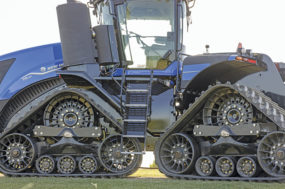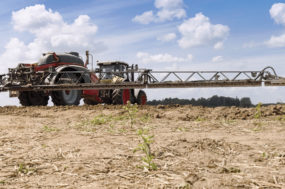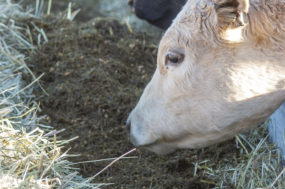We were living by Middleton, Idaho, at the time. After supper one evening, Elli asked if I was up for pie for dessert. I said yes and asked what kind of pie. “Sad pie,” she replied.
“And what, pray tell, is sad pie?” I asked.
She giggled and then told me the story. Elli had learned how to tole paint, which is decorative painting of designs, flowers and such on plates, plaques, knickknacks and other objects. She helped another young mother learn how and declined to take payment since she didn’t feel she knew enough about it to be charging for lessons.
Her student showed up on Elli’s doorstep with a pie in hand, one of those deliciously fattening things in a graham cracker crust with a cream cheese base covered with a fruit topping. This one was part blueberry and part cherry.
“It’s kind of a sad pie,” the maker said as she handed it off to Elli, “I already had half the topping on it when I realized that I didn’t have another can of blueberry topping.”
And so from then on at my house, that type of pie has always been known as “sad pie.”
It was given as a gesture of thanks, and the fact that it was not normal and perfect didn’t matter.
One of my regrets in life is that I didn’t take enough pictures. In the Howe and Mud Lake areas of eastern Idaho, some of the hay growers had assembled hay loaders for loading small bales on trucks.
They consisted of the frame and axles of a 2-ton truck with a farm tractor-style loader mounted over the dual rear wheels of the truck frame. The cab was usually reversed, facing the rear. The best setup used a tilt-cab over engine cab. That left the engine covered. Most of the time an automatic transmission was transplanted into the rig.
The first time a person saw one of these loaders, there was a lot of eye-rubbing and amazement. Properly set up, they were very fast at loading hay.
The downside was that they were limited to on-farm use since to move them required the driver to look over his shoulder as he drove it, cab on backwards, up the road. Or it could be operated with the driver facing forward but with the truck/loader running in reverse gear.
I built a similar rig for my use, loading and unloading my old hay truck. I needed to be able to road it to the stack or to the dairy where we were unloading, so mine left the original front-facing cab in place. On the passenger side, I mounted a second set of controls which faced the rear.
The chassis and cab was a 1951 Dodge truck and the engine and transmission were from a 1976 Ford pickup. There was controversy as to what it was, either a Dodord or a Fordge. Plan A was that it would be a working prototype and that it would be replaced with a more refined model in a few months. We ended up running it for about eight years.
Most new ideas in farm equipment start as a working prototype cobbled together with whatever parts and pieces are available. In addition to the Ford and Dodge parts, I used the hydraulic brake and clutch master cylinders and swing pedals from an International Harvester pickup and the hydraulic steering orbitron and steering wheel from a Massey-Ferguson combine. It may have looked like a sad pie, but it worked.
I widened the bale fork so I could pick up 12 bales at a time if they were stacked on edge so they were about 16 inches wide. This worked great with two-tie bales, but with three-tie bales the steering axle left no tracks.
A couple of times, moving with 12 bales on the bale fork, I would need to step on the brakes – and had the rig shift balance so the bales went down and the cab (with me in it) went up. The same movement of the controls that lowered the boom also lowered the cab, and no harm was done.
Several months back, my mother complained that the wheels on her walker were making noise as they turned. I found that the bearing surface at the hub of the wheels was dry and filled the area with white lithium grease. I also noticed that the tennis balls on the feet of the walker opposite the wheels had worn so that they no longer had the anti-skid fur in place.
I replaced them, too. I added a bicycle horn and told Mom that if she was going to be running the wheels off of that thing, she needed a means of warning oncoming traffic. She loved it.
To say thanks, to make something that does a job for you and to be able to make someone smile, those are some of the joys of life. And if some view your efforts as looking like a sad pie – who cares? FG











